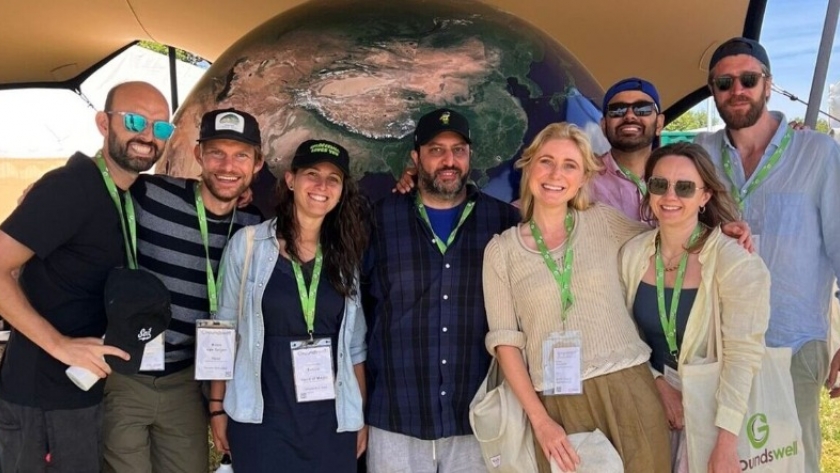
By Agroempresario.com
Regenerative agriculture is no longer just a fringe movement; it is quickly becoming a necessary pillar of global food system transformation. Yet as farmers and innovators gather at events like Groundswell in the UK to explore solutions, a new and growing tension is emerging: the role of deep technology in a practice fundamentally rooted in biology, tradition, and ecological harmony. Can artificial intelligence, robotics, and data science truly support regenerative agriculture, or do they risk distorting its essence?
This is not just a philosophical debate—it’s a practical one. On one side are those who fear that introducing high-tech solutions to regenerative systems undermines the very principles of working with nature, not against it. On the other side, proponents argue that deep tech, if applied responsibly, could be a powerful accelerator of regeneration, enabling precision, insight, and scalability in a world urgently in need of agricultural solutions.
Deep tech, defined by its application of cutting-edge science like AI, machine learning, and biotechnology, has revolutionized many industries. But regenerative agriculture is different—it draws heavily on systems thinking, indigenous knowledge, and the resilience of biological networks. How can such seemingly divergent worlds coexist?
Chef and food system thinker Dan Barber summed up this tension eloquently on the Investing in Regenerative Agriculture and Food podcast. “We don’t have 200 years,” he warned, referring to the slow timeline of traditional breeding and ecological transition. “What AI presents for us… is an opportunity to do this kind of thing much faster.” However, he also cautioned that the benefit depends entirely on “whose hands it’s in, and to what ends?”
Barber sees deep tech as a means of amplifying—not replacing—nature’s intelligence. Technologies like AI could help identify crop genetics that thrive in specific micro-ecosystems or fast-track regenerative plant breeding. This, he insists, would support the biological fabric of regenerative farming rather than erode it.
Still, many experts urge caution. Brazilian climate scientist Antonio Nobre, also interviewed on the same podcast, highlighted that our current understanding of biology remains startlingly limited. “We should be humble,” he said, emphasizing that DNA alone doesn’t define an organism. The cellular environment, microbial communities, and epigenetic interactions are equally crucial. “We are starting to touch the tip of the iceberg.”
This humility is vital when introducing deep tech into regenerative contexts. Without a deep respect for biological complexity, technology risks oversimplifying ecosystems—something that industrial agriculture has already done with harmful consequences. Applying AI or sensors to flawed models could generate solutions that are not only ineffective but potentially destructive.
A significant roadblock in aligning deep tech with regenerative goals is data. As Ethan Soloviev, Chief Innovation Officer at HowGood, noted, “If we want to regenerate nature, then we need to ask AI questions about that.” Current AI tools, trained on vast troves of internet text, may not reflect the intricate feedback loops and non-linear dynamics of ecosystems. Soloviev advocates for training models on the “language of nature” rather than the language of spreadsheets and articles.
He envisions the creation of “ecosystem oracles”—AI systems grounded in ecological data, not economic abstractions. These would monitor, model, and predict the real-time behavior of soils, plants, water cycles, and microbial interactions. Instead of just identifying pests or optimizing yields, they could help farmers regenerate entire landscapes.
Not all technology needs to be high-concept to make an impact. John Kempf, regenerative farmer and founder of Advancing Eco Agriculture, champions tools that enhance biological processes. From precision irrigation systems that reduce water waste to multispectral sensors that track plant stress, Kempf sees tech as a support system—one that helps farmers listen to their land more closely.
Kempf even launched a digital twin of himself: a chatbot trained on years of his teachings that allows anyone to ask “him” questions on regenerative practices. This democratizes access to hard-won knowledge, helping scale regenerative insight without diluting its integrity.
For deep tech to be truly useful in regenerative systems, it must respect the nuances of place-based agriculture. Technologies shouldn’t replace the farmer’s intuition or the natural intelligence of the soil—they should enhance them. Louisa Burwood-Taylor, head of media and research at AgFunder, sees this as the future of regenerative innovation: not one where farmers become data analysts, but where tools are intuitive, rooted in biology, and designed to serve regeneration first.
At the 2025 Groundswell event, these questions took center stage, prompting vibrant discussions about what kind of future we’re building for agriculture—and who gets to decide. Some fear that corporate-led tech solutions might co-opt regenerative ideals, turning them into marketing labels or tech platforms devoid of ecological grounding. Others are optimistic that responsible investment and transparent research can forge a third path—one where tech and nature grow together.
In the end, the debate isn’t whether regenerative agriculture should use deep tech, but how it uses it. The smartest path forward may be a hybrid one—where traditional ecological wisdom meets modern analytical power. Imagine an AI system that helps determine optimal grazing patterns based on microbial life, or a drone swarm that maps plant diversity to suggest companion planting combinations.
This is not about turning farms into robots—it’s about supporting farmers as the stewards of complex, living systems. As Soloviev puts it, “The real challenge is to let nature lead—and let tech follow.”
